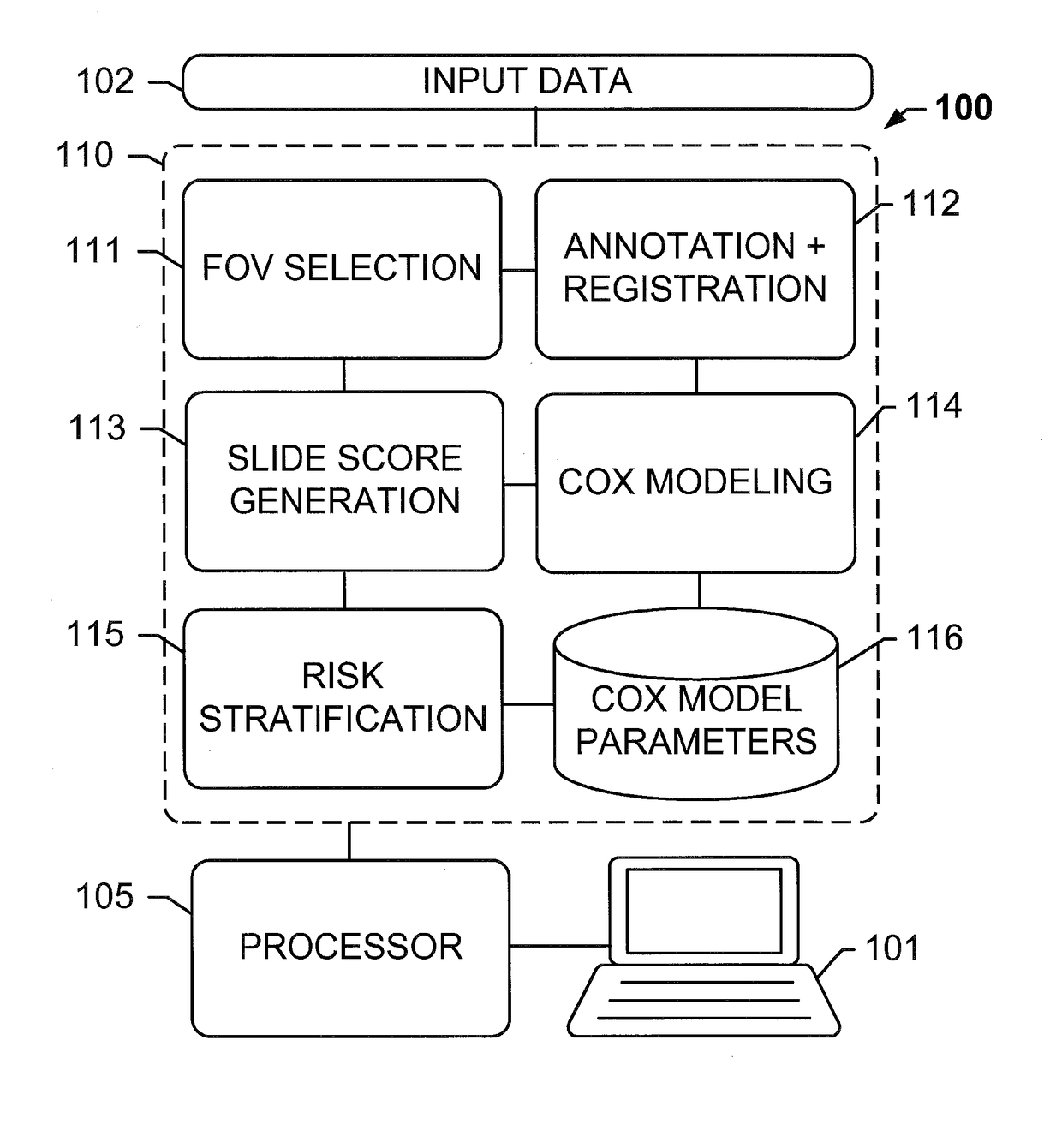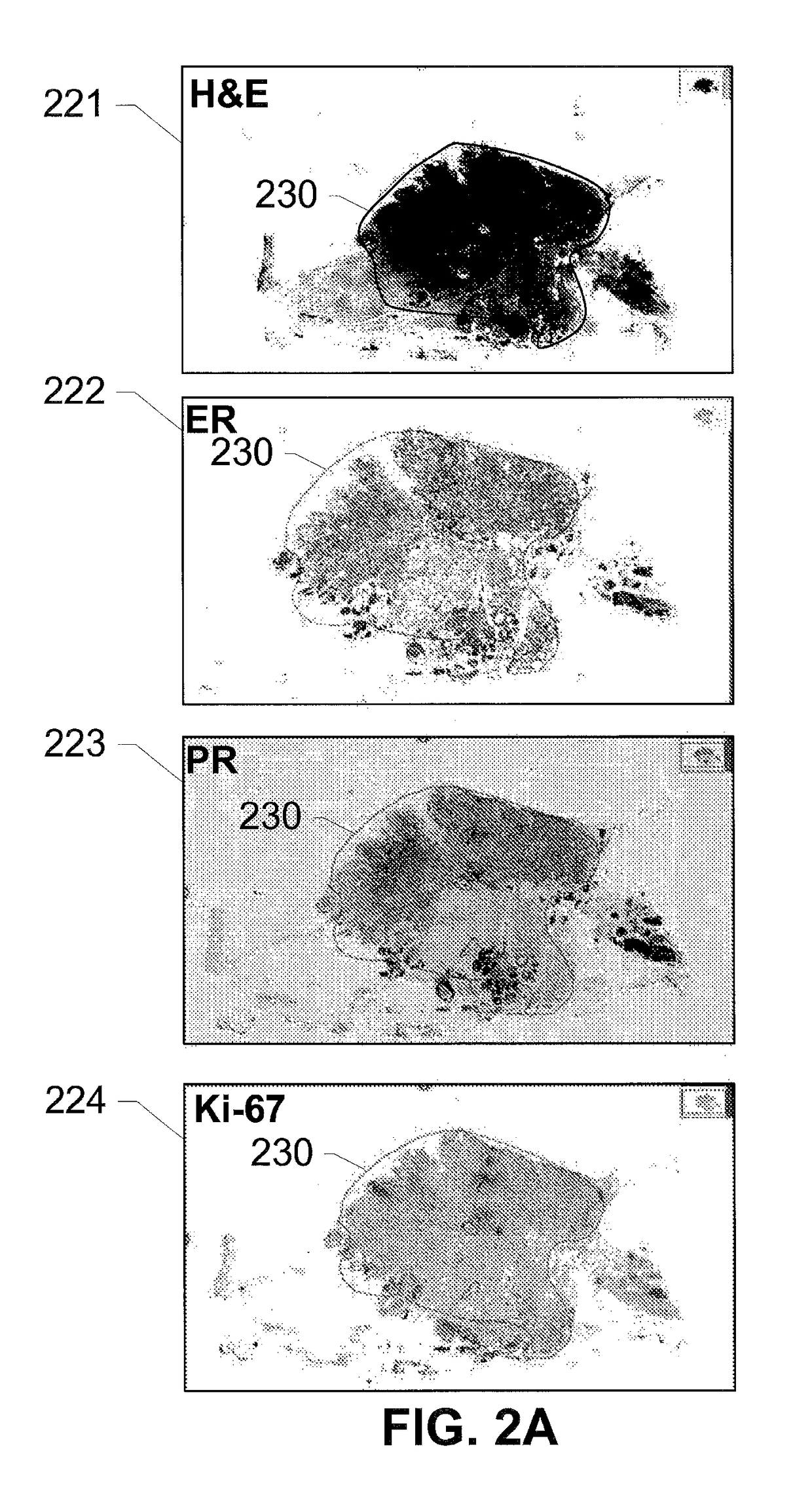Computational pathology systems and methods for early-stage cancer prognosis
a pathology and computational technology, applied in the field of computational pathology, can solve the problems of underlying risk of local or distant cancer recurrence, increased mortality rate of patients who experience recurrence, etc., and achieve the effects of reducing the computational cost of performing, reducing unnecessary hardship, and avoiding adverse side effects
- Summary
- Abstract
- Description
- Claims
- Application Information
AI Technical Summary
Benefits of technology
Problems solved by technology
Method used
Image
Examples
Embodiment Construction
[0037]The subject disclosure presents systems and computer-implemented methods for providing reliable risk stratification for early-stage breast cancer patients by providing a prognostic model to predict a recurrence risk of the patient and to categorize the patient into a high or low risk group. A risk stratification system may be trained using training data that includes tissue slides from several patients along with survival data for said patients. The tissue slides may represent the time of diagnosis of the patient. The tissue slides may be processed according to a specific staining protocol and stains or biomarkers may be scored using a specific scoring protocol. For example, a series of histopathological simplex and / or multiplex tissue slides from serial sections of cancerous tissue block corresponding to each patient and stained with H&E and multiple IHC tumor and immune markers (such as tumor markers ER, PR, Ki67, HER2, etc. and / or immune markers such as CD3, CD8, CD4 etc.) ...
PUM
 Login to View More
Login to View More Abstract
Description
Claims
Application Information
 Login to View More
Login to View More - R&D
- Intellectual Property
- Life Sciences
- Materials
- Tech Scout
- Unparalleled Data Quality
- Higher Quality Content
- 60% Fewer Hallucinations
Browse by: Latest US Patents, China's latest patents, Technical Efficacy Thesaurus, Application Domain, Technology Topic, Popular Technical Reports.
© 2025 PatSnap. All rights reserved.Legal|Privacy policy|Modern Slavery Act Transparency Statement|Sitemap|About US| Contact US: help@patsnap.com



